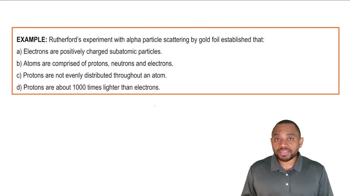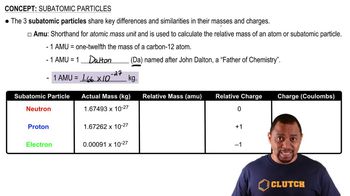Textbook Question
The atomic weight of carbon (12.011) is approximately 12 times that of hydrogen (1.008).(a) Show how you can use this knowledge to calculate pos-sible formulas for benzene, ethane, and ethylene (Prob-lem 2.82).
 Verified step by step guidance
Verified step by step guidance


Label the following statements about J. J. Thomson's cathode-ray tube experiments shown in Figure 2.6 as true or false. (b) A cathode ray is a stream of charged particles.
Label the following statements about J. J. Thomson's cathode-ray tube experiments shown in Figure 2.6 as true or false. (c) The cathode ray is deflected away from a positively charged plate.